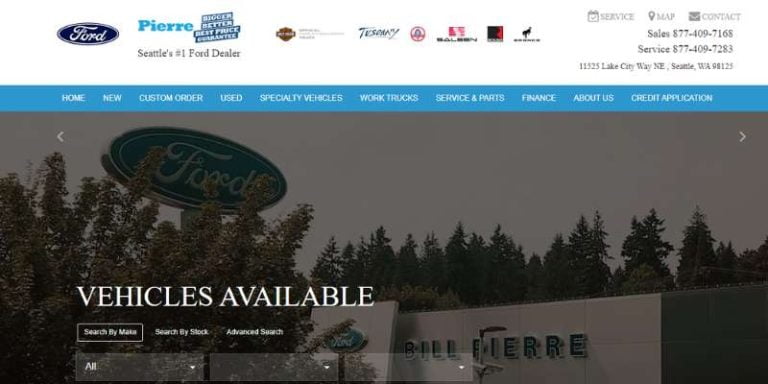
Turn your sustainability obstacles into actionable commitments
Going from sustainability ambition to action isn’t always easy. By making changes in your organization’s leadership, infrastructure, and product design processes, you can help your organization contribute to a greener planet.
getty
Sustainability has moved into the mainstream of business goals, with organizations in the Forbes Global 2000 and beyond now making commitments to become more sustainable. That means different things to different organizations in different industries: anything from cutting employees’ plastic bottle use to pursuing carbon neutrality with offsets, to our own recent commitment to operate entirely on 24/7 carbon-free energy by 2030.
But there’s also an increasingly common problem: companies recognize environmental efforts as important, but they’re slow to implement actionable targets. In research we conducted in partnership with IDG, 90% of global information technology (IT) leaders marked sustainability as a priority but only 67% had a sustainability target in place for their organization.
As a technology business, we find that technology teams can be centers of sustainable innovation, even when they face challenges in pinpointing their best opportunities for optimization. When companies first embark on their sustainability initiatives, there are several things they need to work through to begin to make progress on sustainability.
Competing pressures
Table of Contents
Today, business and technology leaders have a lot to consider beyond sustainability. They need to ensure that their applications and infrastructure are fast and powerful for their users. They have to prioritize resiliency and eliminate downtime, especially in the wake of the COVID-19 pandemic, when the entire business world had to become digital overnight. They also have to make sure that their products are both secure and cost-effective, as they grow their customer base.
Then sustainability comes into play, with products and infrastructure under increasing pressure to be environmentally friendly. Organizations are also expected to deal with the issue of carbon reduction, which can be confusing on its own. It’s no wonder, then, why progress on sustainability falters. Those are a lot of factors, all vying for attention, that can contribute to cognitive overload and lead to decision-making paralysis or delays.
Solving for sustainability
At Google, we’ve built sustainability into everything that we do since the company was founded in 1998. In Google Cloud, that means engaging with customers throughout the globe to help them use our technology to make their own operations more sustainable. Here are some of the common approaches we’ve learned to help customers make real progress against their sustainability targets.
1) Bring technical and sustainability teams together
Providing space for sustainability teams and technical teams to collaborate can lead to new sustainability innovations. At Google, the mission set by our sustainability team to build technology that helps users do more for the planet, guides our strategy, infrastructure, and product efforts that help us run the cleanest cloud in the industry. Further, the collaboration between sustainability and engineering teams at Google have led to breakthrough innovations like optimizing our data centers to work harder when renewable energy is abundant.
Likewise, including technical and sustainability teams in every decision-making level can help your company build a more sustainable business. One great example of a Google Cloud customer that has done that is Etsy, where close collaboration between technical and sustainability teams helped reduce Etsy’s energy consumption and power their marketplace with 100% renewable electricity.
Projects can get complicated quickly, particularly when migrating your infrastructure or building new applications. To keep things simple, aim to agree not only on a common key performance indicator (KPI) related to sustainability like carbon emissions, energy or materials use, but incorporate it just like you would more common KPIs like resiliency, price, and security.
We incorporate sustainability impact in our customer onboarding process, so that our engineers and sales teams can help you design your cloud footprint with tools and services that prioritize sustainability. By considering carbon emissions, and pricing the social cost of carbon into ROI and value models for customers, decision makers can assess sustainability impact more consistently with financial impact.
3) Don’t create more unsustainable, technical debt for yourself
It’s important to prioritize sustainability early in your project planning. When sustainability concerns are incorporated from the very beginning, downstream impacts in design and deployment contribute to our overall carbon reduction efforts.
We recently tested how presenting lower carbon location options to users of Google Cloud might influence their choice on where to run their application. While all users were 19% more likely to choose a low carbon region, new users were more than 50% more likely to make the green choice. They weren’t burdened by previous region choices and were free to reduce their carbon impact even more.
4) Design sustainability into everything you do
Sustainability isn’t a one-and-done proposition; every action needs to be considered through the lens of sustainability. Different audiences can benefit from sustainability signals if they’re surfaced at the right moment and in the right context to help them take action or make a decision.
For prospective app developers on Google Cloud we recently released a region picker that helps you assess key factors like price, latency, and carbon footprint when choosing which Google Cloud region to run on. For individual users, we include a green leaf icon inside the console next to Google Cloud regions that use the highest percentage of carbon-free energy.
Related: Save the date for Google Cloud Next ’21 to learn how you can migrate quickly with the cleanest cloud for sustainability.
Helping you take action
Going from sustainability ambition to action isn’t always easy. At Google Cloud, we want to help you make progress against your specific sustainability goals. By making changes in your organization’s leadership, infrastructure, and product design processes, you can finally help your organization contribute to a greener planet for all.
Get moving on your targets and reduce your environmental impact with Google Cloud. Explore tools and technology for sustainability at scale.






